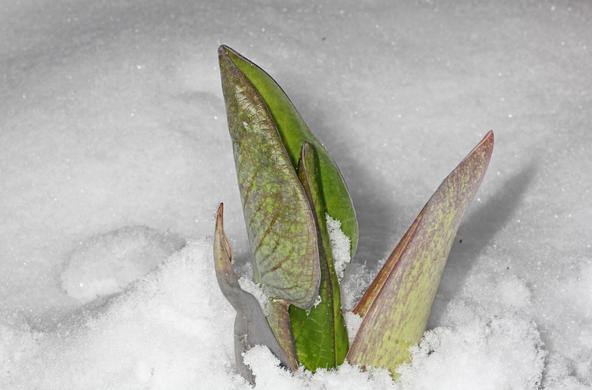Change in day length is the most important factor prompting the onset of fall foliage. As days grow shorter and darkness increases, leaves stop producing chlorophyll, the green pigment that lets plants convert energy from sunlight. This breakdown allows other colors take center stage; the yellow, orange, red, and brown tones that we associate with fall are always present in leaves, but they are masked by an abundance of chlorophyll during summer’s long days.
Different tree species are associated with different colors. Hickory and sycamore leaves are golden-orange. Ash leaves tend to be yellow and purple. Oaks hold onto their leaves the longest and produce russet brown foliage. Sugar maples take on an orange or red tone.
The ecology of red fall foliage is not well known. There is evidence that red leaves are more prevalent when days are warm, dry, and sunny, and nights are cool (but not freezing). Red foliage has also been linked to fungus and drought.
During their lifetime, trees respond to a range of environmental influences, from airborne pollutants to insect pests, many of which can influence leaf color. The Cary Institute is part of a National Phenology Network project exploring how environmental conditions affect the timing of when leaves change color and fall from trees. Careful monitoring can help answer bigger-picture questions, such as impacts of ozone pollution or climate change.
Armchair leaf-viewers can log on to the Tree Cam to see real-time aerial views of changing foliage near the main research building. The campus grounds are open to visitors from 8:30 am-7pm until October 31, when they close for the winter season.
Updated: 10/17/19







